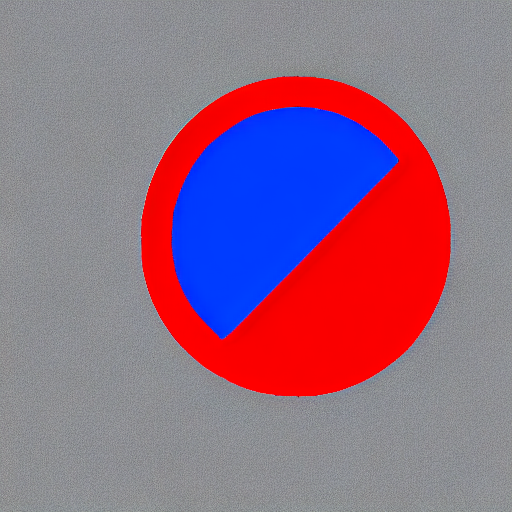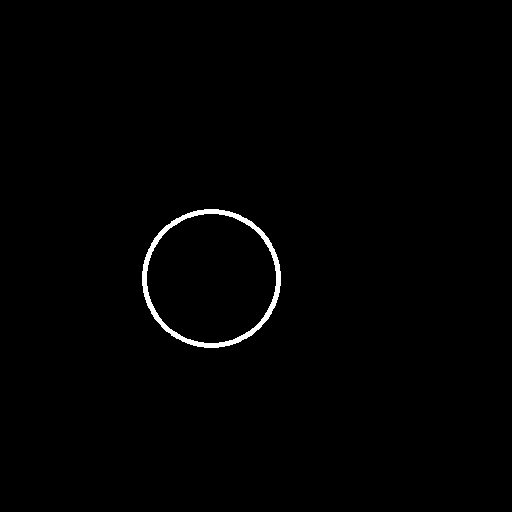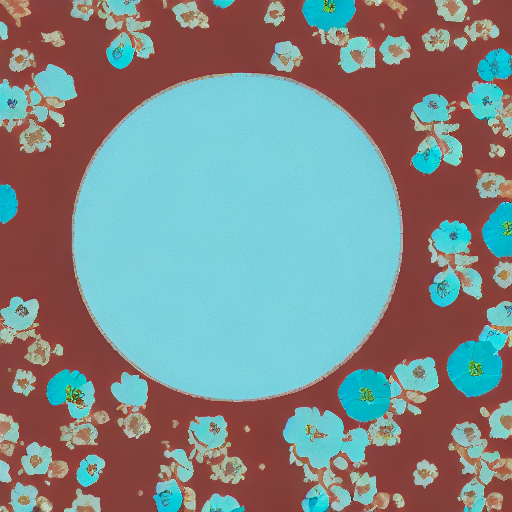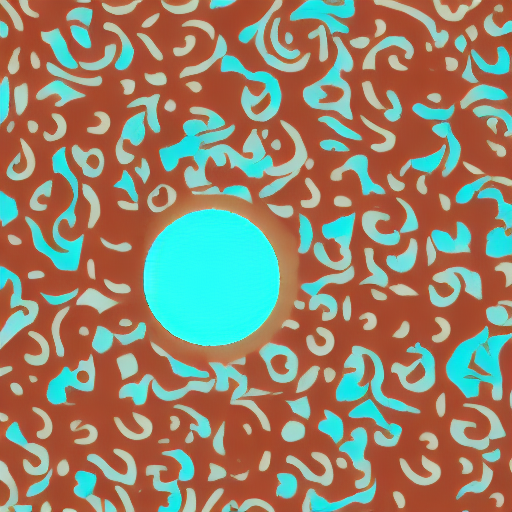-
Notifications
You must be signed in to change notification settings - Fork 6.1k
add: controlnet entry to training section in the docs. #2677
New issue
Have a question about this project? Sign up for a free GitHub account to open an issue and contact its maintainers and the community.
By clicking “Sign up for GitHub”, you agree to our terms of service and privacy statement. We’ll occasionally send you account related emails.
Already on GitHub? Sign in to your account
Changes from all commits
71ae84c
49b85eb
8c99e58
5d1e552
2f97cc0
File filter
Filter by extension
Conversations
Jump to
Diff view
Diff view
There are no files selected for viewing
| Original file line number | Diff line number | Diff line change | ||||
|---|---|---|---|---|---|---|
| @@ -0,0 +1,290 @@ | ||||||
| <!--Copyright 2023 The HuggingFace Team. All rights reserved. | ||||||
|
|
||||||
| Licensed under the Apache License, Version 2.0 (the "License"); you may not use this file except in compliance with | ||||||
| the License. You may obtain a copy of the License at | ||||||
|
|
||||||
| http://www.apache.org/licenses/LICENSE-2.0 | ||||||
|
|
||||||
| Unless required by applicable law or agreed to in writing, software distributed under the License is distributed on | ||||||
| an "AS IS" BASIS, WITHOUT WARRANTIES OR CONDITIONS OF ANY KIND, either express or implied. See the License for the | ||||||
| specific language governing permissions and limitations under the License. | ||||||
| --> | ||||||
|
|
||||||
| # ControlNet | ||||||
|
|
||||||
| [Adding Conditional Control to Text-to-Image Diffusion Models](https://arxiv.org/abs/2302.05543) (ControlNet) by Lvmin Zhang and Maneesh Agrawala. | ||||||
|
|
||||||
| This example is based on the [training example in the original ControlNet repository](https://github.com/lllyasviel/ControlNet/blob/main/docs/train.md). It trains a ControlNet to fill circles using a [small synthetic dataset](https://huggingface.co/datasets/fusing/fill50k). | ||||||
|
There was a problem hiding this comment. Choose a reason for hiding this commentThe reason will be displayed to describe this comment to others. Learn more.
Suggested change
There was a problem hiding this comment. Choose a reason for hiding this commentThe reason will be displayed to describe this comment to others. Learn more. I think it's not actually a guide, though. We are just showing how to use the example script and not discussing the training methodology (for which the script is there). There was a problem hiding this comment. Choose a reason for hiding this commentThe reason will be displayed to describe this comment to others. Learn more. I think this is the same thing even if you aren't discussing the training methodology. By showing how to do something, you're still guiding the user. I'm fine with either way though :) There was a problem hiding this comment. Choose a reason for hiding this commentThe reason will be displayed to describe this comment to others. Learn more. |
||||||
|
|
||||||
| ## Installing the dependencies | ||||||
|
|
||||||
| Before running the scripts, make sure to install the library's training dependencies. | ||||||
|
|
||||||
| <Tip warning={true}> | ||||||
|
|
||||||
| To successfully run the latest versions of the example scripts, we highly recommend **installing from source** and keeping the installation up to date. We update the example scripts frequently and install example-specific requirements. | ||||||
|
|
||||||
| </Tip> | ||||||
|
|
||||||
| To do this, execute the following steps in a new virtual environment: | ||||||
| ```bash | ||||||
| git clone https://github.com/huggingface/diffusers | ||||||
| cd diffusers | ||||||
| pip install -e . | ||||||
| ``` | ||||||
|
|
||||||
| Then navigate into the example folder and run: | ||||||
| ```bash | ||||||
| pip install -r requirements.txt | ||||||
| ``` | ||||||
|
|
||||||
| And initialize an [🤗Accelerate](https://github.com/huggingface/accelerate/) environment with: | ||||||
|
|
||||||
| ```bash | ||||||
| accelerate config | ||||||
| ``` | ||||||
|
|
||||||
| Or for a default 🤗Accelerate configuration without answering questions about your environment: | ||||||
|
|
||||||
| ```bash | ||||||
| accelerate config default | ||||||
| ``` | ||||||
|
|
||||||
| Or if your environment doesn't support an interactive shell like a notebook: | ||||||
|
|
||||||
| ```python | ||||||
| from accelerate.utils import write_basic_config | ||||||
|
|
||||||
| write_basic_config() | ||||||
| ``` | ||||||
|
|
||||||
| ## Circle filling dataset | ||||||
|
|
||||||
| The original dataset is hosted in the ControlNet [repo](https://huggingface.co/lllyasviel/ControlNet/blob/main/training/fill50k.zip), but we re-uploaded it [here](https://huggingface.co/datasets/fusing/fill50k) to be compatible with 🤗 Datasets so that it can handle the data loading within the training script. | ||||||
|
|
||||||
| Our training examples use [`runwayml/stable-diffusion-v1-5`](https://huggingface.co/runwayml/stable-diffusion-v1-5) because that is what the original set of ControlNet models was trained on. However, ControlNet can be trained to augment any compatible Stable Diffusion model (such as [`CompVis/stable-diffusion-v1-4`](https://huggingface.co/CompVis/stable-diffusion-v1-4)) or [`stabilityai/stable-diffusion-2-1`](https://huggingface.co/stabilityai/stable-diffusion-2-1). | ||||||
|
|
||||||
| ## Training | ||||||
|
|
||||||
| Download the following images to condition our training with: | ||||||
|
|
||||||
| ```sh | ||||||
| wget https://huggingface.co/datasets/huggingface/documentation-images/resolve/main/diffusers/controlnet_training/conditioning_image_1.png | ||||||
|
|
||||||
| wget https://huggingface.co/datasets/huggingface/documentation-images/resolve/main/diffusers/controlnet_training/conditioning_image_2.png | ||||||
| ``` | ||||||
|
|
||||||
|
|
||||||
| ```bash | ||||||
| export MODEL_DIR="runwayml/stable-diffusion-v1-5" | ||||||
| export OUTPUT_DIR="path to save model" | ||||||
|
|
||||||
| accelerate launch train_controlnet.py \ | ||||||
| --pretrained_model_name_or_path=$MODEL_DIR \ | ||||||
| --output_dir=$OUTPUT_DIR \ | ||||||
| --dataset_name=fusing/fill50k \ | ||||||
| --resolution=512 \ | ||||||
| --learning_rate=1e-5 \ | ||||||
| --validation_image "./conditioning_image_1.png" "./conditioning_image_2.png" \ | ||||||
| --validation_prompt "red circle with blue background" "cyan circle with brown floral background" \ | ||||||
| --train_batch_size=4 | ||||||
| ``` | ||||||
|
|
||||||
| This default configuration requires ~38GB VRAM. | ||||||
|
|
||||||
| By default, the training script logs outputs to tensorboard. Pass `--report_to wandb` to use Weights & | ||||||
| Biases. | ||||||
|
|
||||||
| Gradient accumulation with a smaller batch size can be used to reduce training requirements to ~20 GB VRAM. | ||||||
|
|
||||||
| ```bash | ||||||
| export MODEL_DIR="runwayml/stable-diffusion-v1-5" | ||||||
| export OUTPUT_DIR="path to save model" | ||||||
|
|
||||||
| accelerate launch train_controlnet.py \ | ||||||
| --pretrained_model_name_or_path=$MODEL_DIR \ | ||||||
| --output_dir=$OUTPUT_DIR \ | ||||||
| --dataset_name=fusing/fill50k \ | ||||||
| --resolution=512 \ | ||||||
| --learning_rate=1e-5 \ | ||||||
| --validation_image "./conditioning_image_1.png" "./conditioning_image_2.png" \ | ||||||
| --validation_prompt "red circle with blue background" "cyan circle with brown floral background" \ | ||||||
| --train_batch_size=1 \ | ||||||
| --gradient_accumulation_steps=4 | ||||||
| ``` | ||||||
|
|
||||||
| ## Example results | ||||||
|
|
||||||
| #### After 300 steps with batch size 8 | ||||||
|
Comment on lines
+116
to
+118
There was a problem hiding this comment. Choose a reason for hiding this commentThe reason will be displayed to describe this comment to others. Learn more. I don't think these (Example results, and after 300/600 steps) need to be headers since its a continuation of running the training script and should be on the same hierarchical level; it can just be regular text saying after 300 steps with batch size 8 (same with the header below) There was a problem hiding this comment. Choose a reason for hiding this commentThe reason will be displayed to describe this comment to others. Learn more. Bulk update candidate I believe since this is what we follow for the all the other training examples. |
||||||
|
|
||||||
| | | | | ||||||
| |-------------------|:-------------------------:| | ||||||
| | | red circle with blue background | | ||||||
|  |  | | ||||||
| | | cyan circle with brown floral background | | ||||||
|  |  | | ||||||
|
|
||||||
|
|
||||||
| #### After 6000 steps with batch size 8: | ||||||
|
|
||||||
| | | | | ||||||
| |-------------------|:-------------------------:| | ||||||
| | | red circle with blue background | | ||||||
|  |  | | ||||||
| | | cyan circle with brown floral background | | ||||||
|  |  | | ||||||
|
|
||||||
| ## Training on a 16 GB GPU | ||||||
|
|
||||||
| Enable the following optimizations to train on a 16GB GPU: | ||||||
|
|
||||||
| - Gradient checkpointing | ||||||
| - bitsandbyte's 8-bit optimizer (take a look at the [installation]((https://github.com/TimDettmers/bitsandbytes#requirements--installation) instructions if you don't already have it installed) | ||||||
|
|
||||||
| Now you can launch the training script: | ||||||
|
|
||||||
| ```bash | ||||||
| export MODEL_DIR="runwayml/stable-diffusion-v1-5" | ||||||
| export OUTPUT_DIR="path to save model" | ||||||
|
|
||||||
| accelerate launch train_controlnet.py \ | ||||||
| --pretrained_model_name_or_path=$MODEL_DIR \ | ||||||
| --output_dir=$OUTPUT_DIR \ | ||||||
| --dataset_name=fusing/fill50k \ | ||||||
| --resolution=512 \ | ||||||
| --learning_rate=1e-5 \ | ||||||
| --validation_image "./conditioning_image_1.png" "./conditioning_image_2.png" \ | ||||||
| --validation_prompt "red circle with blue background" "cyan circle with brown floral background" \ | ||||||
| --train_batch_size=1 \ | ||||||
| --gradient_accumulation_steps=4 \ | ||||||
| --gradient_checkpointing \ | ||||||
| --use_8bit_adam | ||||||
| ``` | ||||||
|
|
||||||
| ## Training on a 12 GB GPU | ||||||
|
|
||||||
| Enable the following optimizations to train on a 12GB GPU: | ||||||
| - Gradient checkpointing | ||||||
| - bitsandbyte's 8-bit optimizer (take a look at the [installation]((https://github.com/TimDettmers/bitsandbytes#requirements--installation) instructions if you don't already have it installed) | ||||||
| - xFormers (take a look at the [installation](https://huggingface.co/docs/diffusers/training/optimization/xformers) instructions if you don't already have it installed) | ||||||
| - set gradients to `None` | ||||||
|
|
||||||
| ```bash | ||||||
| export MODEL_DIR="runwayml/stable-diffusion-v1-5" | ||||||
| export OUTPUT_DIR="path to save model" | ||||||
|
|
||||||
| accelerate launch train_controlnet.py \ | ||||||
| --pretrained_model_name_or_path=$MODEL_DIR \ | ||||||
| --output_dir=$OUTPUT_DIR \ | ||||||
| --dataset_name=fusing/fill50k \ | ||||||
| --resolution=512 \ | ||||||
| --learning_rate=1e-5 \ | ||||||
| --validation_image "./conditioning_image_1.png" "./conditioning_image_2.png" \ | ||||||
| --validation_prompt "red circle with blue background" "cyan circle with brown floral background" \ | ||||||
| --train_batch_size=1 \ | ||||||
| --gradient_accumulation_steps=4 \ | ||||||
| --gradient_checkpointing \ | ||||||
| --use_8bit_adam \ | ||||||
| --enable_xformers_memory_efficient_attention \ | ||||||
| --set_grads_to_none | ||||||
| ``` | ||||||
|
|
||||||
| When using `enable_xformers_memory_efficient_attention`, please make sure to install `xformers` by `pip install xformers`. | ||||||
|
There was a problem hiding this comment. Choose a reason for hiding this commentThe reason will be displayed to describe this comment to others. Learn more. It'd be better to have this info up front before launching the script I think There was a problem hiding this comment. Choose a reason for hiding this commentThe reason will be displayed to describe this comment to others. Learn more. Same as what I said regarding |
||||||
|
|
||||||
| ## Training on an 8 GB GPU | ||||||
|
|
||||||
| We have not exhaustively tested DeepSpeed support for ControlNet. While the configuration does | ||||||
| save memory, we have not confirmed whether the configuration trains successfully. You will very likely | ||||||
| have to make changes to the config to have a successful training run. | ||||||
|
|
||||||
| Enable the following optimizations to train on a 8GB GPU: | ||||||
| - Gradient checkpointing | ||||||
| - bitsandbyte's 8-bit optimizer (take a look at the [installation]((https://github.com/TimDettmers/bitsandbytes#requirements--installation) instructions if you don't already have it installed) | ||||||
| - xFormers (take a look at the [installation](https://huggingface.co/docs/diffusers/training/optimization/xformers) instructions if you don't already have it installed) | ||||||
| - set gradients to `None` | ||||||
| - DeepSpeed stage 2 with parameter and optimizer offloading | ||||||
| - fp16 mixed precision | ||||||
|
|
||||||
| [DeepSpeed](https://www.deepspeed.ai/) can offload tensors from VRAM to either | ||||||
| CPU or NVME. This requires significantly more RAM (about 25 GB). | ||||||
|
|
||||||
| You'll have to configure your environment with `accelerate config` to enable DeepSpeed stage 2. | ||||||
|
|
||||||
| The configuration file should look like this: | ||||||
|
|
||||||
| ```yaml | ||||||
| compute_environment: LOCAL_MACHINE | ||||||
| deepspeed_config: | ||||||
| gradient_accumulation_steps: 4 | ||||||
| offload_optimizer_device: cpu | ||||||
| offload_param_device: cpu | ||||||
| zero3_init_flag: false | ||||||
| zero_stage: 2 | ||||||
| distributed_type: DEEPSPEED | ||||||
| ``` | ||||||
|
|
||||||
| <Tip> | ||||||
|
|
||||||
| See [documentation](https://huggingface.co/docs/accelerate/usage_guides/deepspeed) for more DeepSpeed configuration options. | ||||||
sayakpaul marked this conversation as resolved.
Show resolved
Hide resolved
|
||||||
|
|
||||||
| <Tip> | ||||||
|
|
||||||
| Changing the default Adam optimizer to DeepSpeed's Adam | ||||||
| `deepspeed.ops.adam.DeepSpeedCPUAdam` gives a substantial speedup but | ||||||
| it requires a CUDA toolchain with the same version as PyTorch. 8-bit optimizer | ||||||
| does not seem to be compatible with DeepSpeed at the moment. | ||||||
|
|
||||||
| ```bash | ||||||
| export MODEL_DIR="runwayml/stable-diffusion-v1-5" | ||||||
| export OUTPUT_DIR="path to save model" | ||||||
|
|
||||||
| accelerate launch train_controlnet.py \ | ||||||
| --pretrained_model_name_or_path=$MODEL_DIR \ | ||||||
| --output_dir=$OUTPUT_DIR \ | ||||||
| --dataset_name=fusing/fill50k \ | ||||||
| --resolution=512 \ | ||||||
| --validation_image "./conditioning_image_1.png" "./conditioning_image_2.png" \ | ||||||
| --validation_prompt "red circle with blue background" "cyan circle with brown floral background" \ | ||||||
| --train_batch_size=1 \ | ||||||
| --gradient_accumulation_steps=4 \ | ||||||
| --gradient_checkpointing \ | ||||||
| --enable_xformers_memory_efficient_attention \ | ||||||
| --set_grads_to_none \ | ||||||
| --mixed_precision fp16 | ||||||
| ``` | ||||||
|
|
||||||
| ## Inference | ||||||
|
|
||||||
| The trained model can be run with the [`StableDiffusionControlNetPipeline`]. | ||||||
| Set `base_model_path` and `controlnet_path` to the values `--pretrained_model_name_or_path` and | ||||||
| `--output_dir` were respectively set to in the training script. | ||||||
|
|
||||||
| ```py | ||||||
| from diffusers import StableDiffusionControlNetPipeline, ControlNetModel, UniPCMultistepScheduler | ||||||
| from diffusers.utils import load_image | ||||||
| import torch | ||||||
|
|
||||||
| base_model_path = "path to model" | ||||||
| controlnet_path = "path to controlnet" | ||||||
|
|
||||||
| controlnet = ControlNetModel.from_pretrained(controlnet_path, torch_dtype=torch.float16) | ||||||
| pipe = StableDiffusionControlNetPipeline.from_pretrained( | ||||||
| base_model_path, controlnet=controlnet, torch_dtype=torch.float16 | ||||||
| ) | ||||||
|
|
||||||
| # speed up diffusion process with faster scheduler and memory optimization | ||||||
| pipe.scheduler = UniPCMultistepScheduler.from_config(pipe.scheduler.config) | ||||||
| # remove following line if xformers is not installed | ||||||
| pipe.enable_xformers_memory_efficient_attention() | ||||||
|
|
||||||
| pipe.enable_model_cpu_offload() | ||||||
|
|
||||||
| control_image = load_image("./conditioning_image_1.png") | ||||||
| prompt = "pale golden rod circle with old lace background" | ||||||
|
|
||||||
| # generate image | ||||||
| generator = torch.manual_seed(0) | ||||||
| image = pipe(prompt, num_inference_steps=20, generator=generator, image=control_image).images[0] | ||||||
|
|
||||||
| image.save("./output.png") | ||||||
| ``` | ||||||
There was a problem hiding this comment.
Choose a reason for hiding this comment
The reason will be displayed to describe this comment to others. Learn more.
It'd be nice to give a short intro (2-3 sentences) describing what ControlNet is.
Uh oh!
There was an error while loading. Please reload this page.
There was a problem hiding this comment.
Choose a reason for hiding this comment
The reason will be displayed to describe this comment to others. Learn more.
I think we can do that for all the training examples we have in a bulk PR.